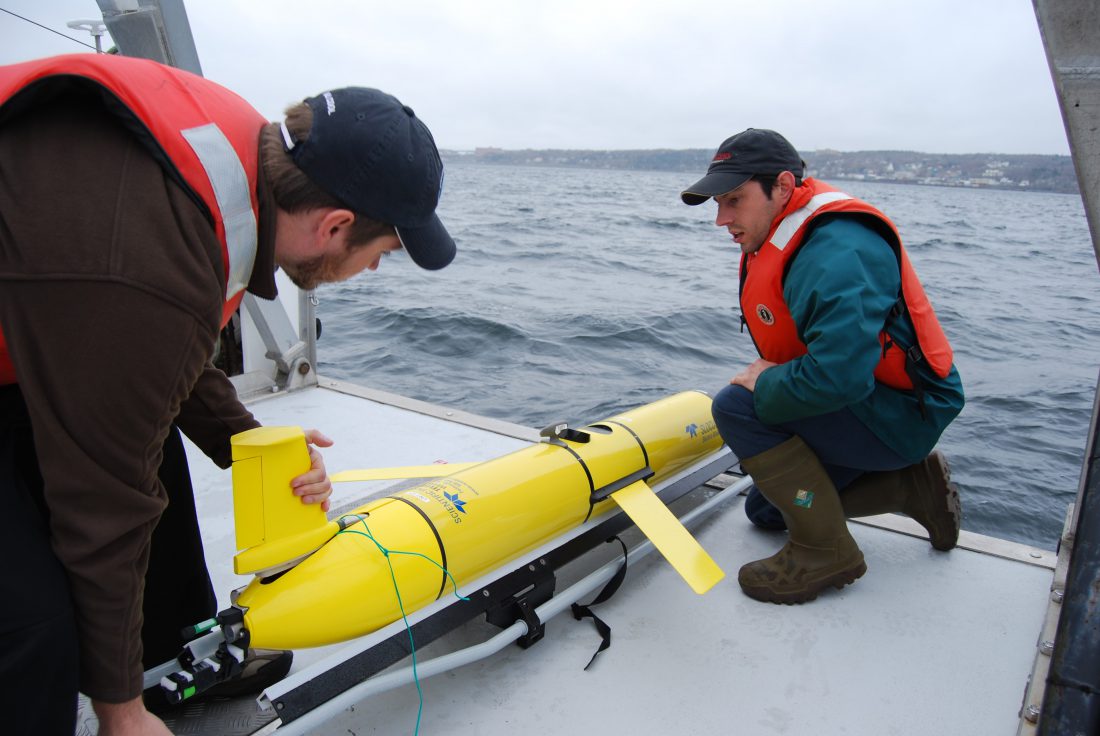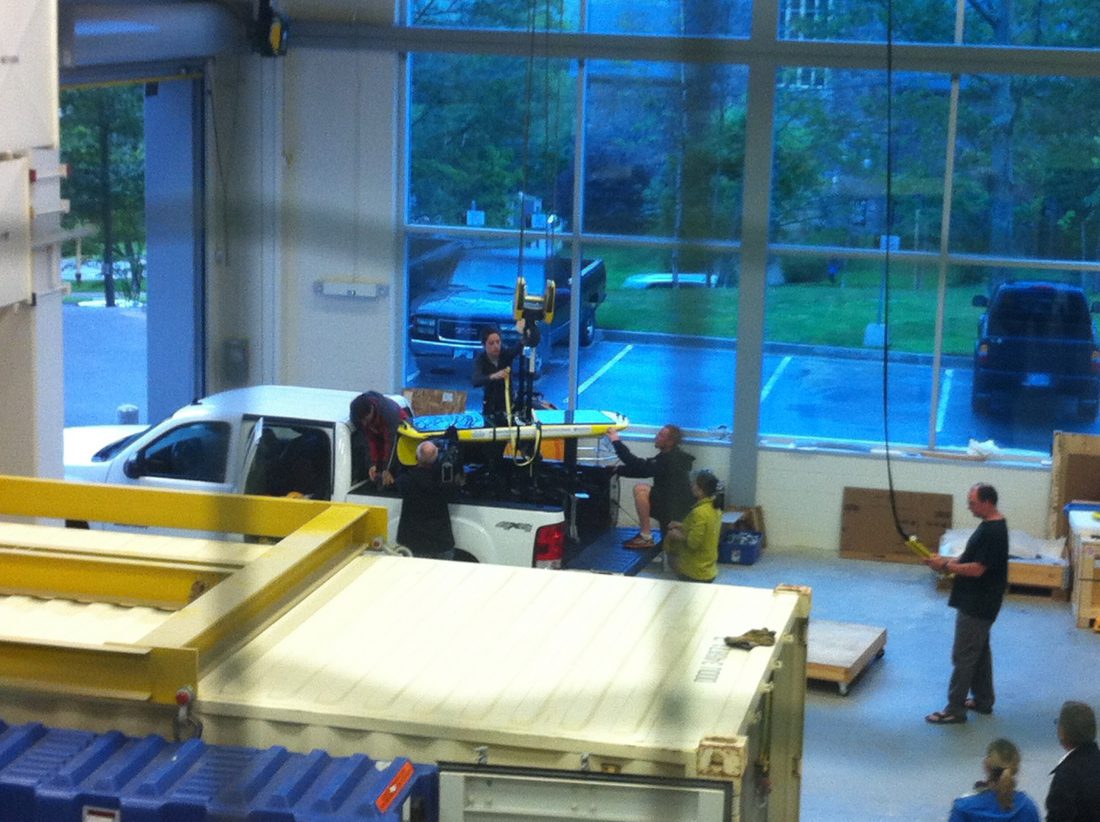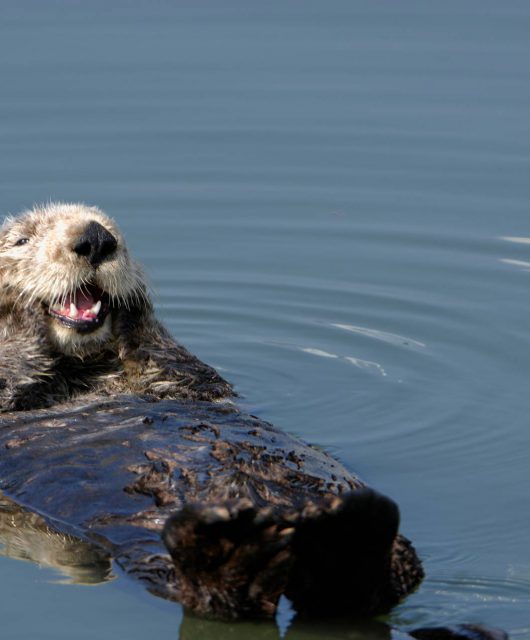The Whales, Habitat and Listening Experiment (WHaLE) is making use of mobile underwater drones called gliders that glide through the ocean measuring whale sounds and the environment the whales live in. It is amazingly cool stuff for techno-geeks. But where do these gliders come from? And who makes them work?
The answer begins with the establishment of the Ocean Tracking Network (OTN), a program that puts acoustic tags in fish around the world, and through a network of underwater acoustic receivers – including some attached to three gliders – scientists are able to track the movements of individual fish in the ocean. So the original purpose of the gliders was to find fish and fish habitat. The WHaLE project has added new functionality and purpose to the glider program by equipping the gliders with passive acoustic monitoring devices to also track the sounds of whales.

The care and deployment of the gliders during each of their 69 missions has been delegated to a team of specialized technicians at OTN headquarters at Dalhousie University. Each glider is a technically complex machine requiring hours of labour to prepare for sea; compasses need to be calibrated, bladders ballasted, batteries installed, and sensors tested. Adam Comeau of OTN is the man behind the machines, carefully preparing the instruments for each deployment. After preparation in the laboratory, each glider is loaded onto the back of a pick-up truck and driven to a dock where it is loaded onto a fishing boat and driven about 20 kilometres from shore where it is launched into deep water.

As soon as the glider is launched, it begins recording data every second, and it surfaces every couple of hours to send its data to a satellite, and then back to OTN at Dalhousie. It is a whole lot of data, and you can see all this data live as it comes in here. Technicians Brad Covey and Jon Pye are the masterminds behind processing all of this data and making it readable for you, me and other scientists to enjoy!
Follow the Quest to Find Canada’s Great Whales for more information.
This post was written by guest blogger Kim Davies, Liber Ero Postdoctoral Fellow, Department of Oceanography, Dalhousie University.



